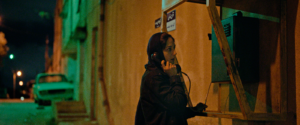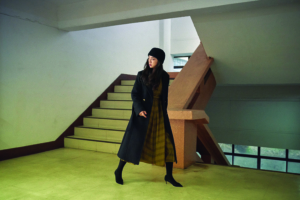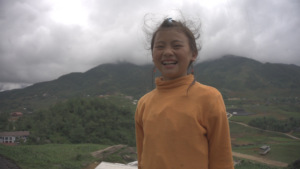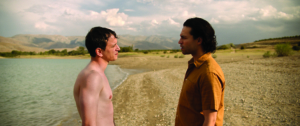In the near future, The Old Man (Yannawoutthi Chanthalungsy) lives near a small rural village outside Vientiane, eking out a living by selling salvaged scrap. As a child – The Boy (Por Silatsa) – he came across a young woman terribly injured after a motorcycle accident, The Girl (Noutnapha Soydara), and held her hand as she died: an act of kindness that created a supernatural bond between them, her spirit staying close to him throughout his life, tethered to that road where she spent her last moments. Fifty years later, she reveals that she can transport him back in time. But when he tries to change the past, to deal with the most painful moment of his life – his mother’s untimely death – he initiates a set of unexpected changes that slip out of his control, leading to ever more grisly results. As he moves backwards and forwards in time, realities overlap and multiply, with seemingly small decisions creating an increasingly complex web.
The Long Walk (2019), the third feature by Lao cinema pioneer Mattie Do, is a genre-crossing film about a time-travelling serial killer who can see ghosts; but its dramatic-sounding plot is really a vehicle to explore grief, loneliness and regret, considering the way the circumstances of our lives – the things we have and also haven’t done – change us in unexpected ways. Do is the first and so far only woman filmmaker from the Lao People’s Democratic Republic, where cinema has only recently emerged as a commercial industry. Born in California to immigrant parents, she relocated to Laos a decade ago. It was here that she became a filmmaker, an unexpected career that she describes to me as happening by chance. When her husband, screenwriter Christopher Larsen, was establishing a relationship with Lao Art Media, the oldest film company in the country, he pitched Do as a director. While she had worked as a make-up artist (she is a trained cosmetologist) on film sets while studying ballet in Italy, Do at the time had no formal film training. Her ensuing directorial debut, Chanthaly (2012), marked several firsts: it was not only the first feature directed by a woman in Laos, but also the first Lao horror film and the first Lao film to screen outside South-East Asia.[1]See ‘Meet Mattie Do – Laos’ First, and Only, Female Filmmaker’, Vietnam Times, 14 January 2020 <https://vietnamtimes.org.vn/meet-mattie-do-laos-first-and-only-female-filmmaker-17482.html>, accessed 11 August 2020. Her second film, Dearest Sister (2016), was Laos’ first submission to the Academy Awards in the Best Foreign Language category.
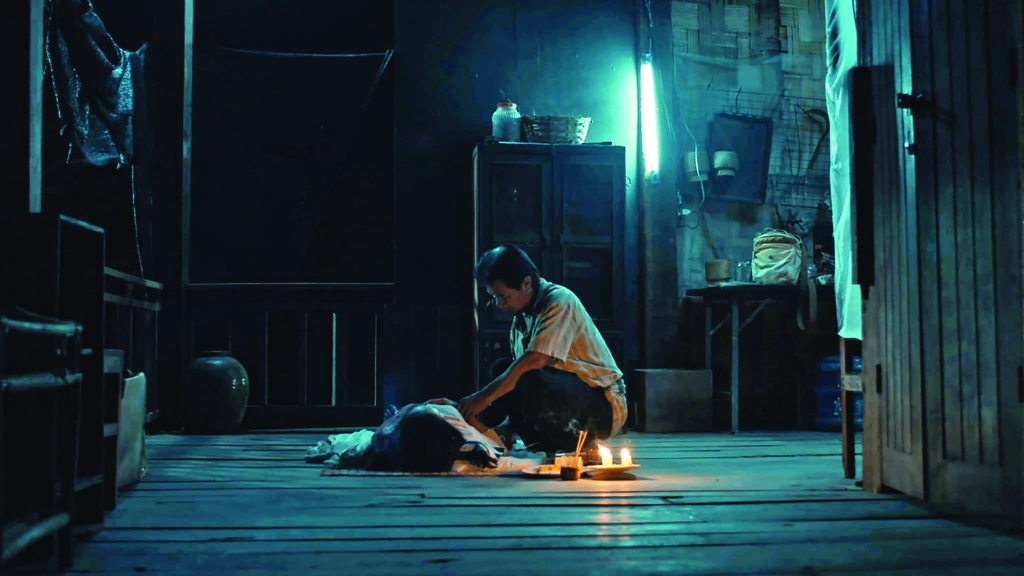
As with Do’s first two films, The Long Walk is filmed in Laos with a local cast speaking Lao. The script is again by Larsen, but this one is more opaque and layered, curiously choosing to leave most characters unnamed. Striking cinematography by Matthew Macar[2]A fortuitous recommendation by filmmakers Justin Benson and Aaron Moorhead, Macar was brought in after production had started and the role of cinematographer unexpectedly needed to be filled. weaves us through the story, drawing from the distinct nature of the location; one particularly beautiful shot captures shards of light filtering through the forest canopy, the air visibly heavy with humidity. The colour grading is also excellent, highlighting the hues of the film’s various environments: vibrant green vegetation, dry golden fields and dusty ochre roads. Music by Anthony Weeden is minimal but effective at building tension, notably a juddering clicking that creates a sense of unease.
The elliptical narrative of The Long Walk dwells in ambiguity, favouring slow revelations over regular signposting, leaving the viewer to make their own connections. There is no caption at the start telling us the date, time or location, but we know it is the near future thanks to brief sci-fi interventions: a jet flies overhead at an incredible speed, meals come in sealed packages and The Old Man has a chip embedded in his forearm used for payments, though this version is described by a younger man as ‘ancient’. Technology is part of life in the once-isolated rural village, which by virtue of its apparent primitiveness has become a tourist destination: English-speaking visitors shop at the market, and an art gallery is opening. The presence of these outsiders recalls the NGO representatives we see arriving at The Old Man’s farm in his youth, ignoring his father’s sensible plea for a tractor in favour of the solar panels that they install without really asking.
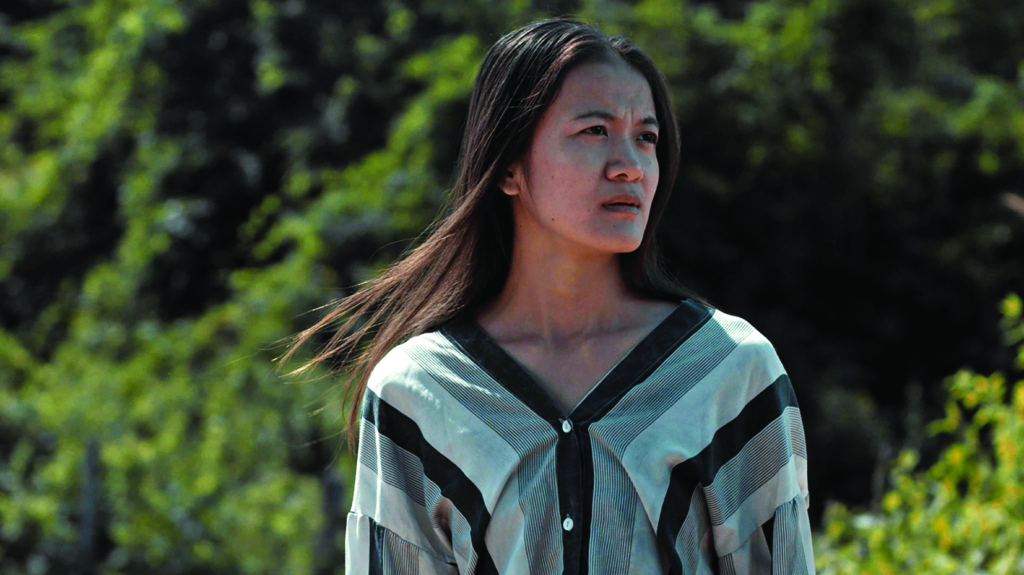
When her mother, a local soup-stall owner, goes missing, city dweller Lina (Vilouna Phetmany) arrives in the village to look for her. Lina’s journey highlights the divide between urban and rural experiences: in this locale, she finds a very different life than in the city we see briefly in the distance, with its skyscrapers and industry. The supernatural is part of daily life in the community: many villagers know that The Old Man communicates with spirits, and some have even glimpsed him with The Girl. Without any leads – and unaware that The Old Man already knows perfectly well what happened to her – the police ask him to help Lina track down her mother, and he reluctantly agrees.
Fifty years earlier, as The Boy, he grows up on a small vegetable farm – The Father (Vithaya Sombath) harvests and The Mother (Chanthamone Inoudome) sells the produce from a roadside stall. When she becomes ill, there is no hospital or treatment to help her. The Father moves to the city, claiming that he will be able to earn more money, but there is no evidence he ever returns. The community does what it can, like the woman at the market who gives The Boy rice when he cannot pay. One day, while amusing himself by kicking an empty water bottle down the road, he finds blood at the entrance to the forest. Venturing in, he discovers The Girl, sprawled on the ground and mortally injured. Begging him not to leave, she reaches out her hand, which he holds as she dies: a gesture both childlike in its compliance and deeply mature. This foreshadows how he will soon kneel beside the body of his mother, who is also dying. While his mother’s suffering ends upon her death, The Boy is wounded by her pain for much longer, distressed by having been unable to help her and scarred by grief. The wails of this hitherto-almost-silent boy – now alone – are heartbreaking. This is the terrible event upon which the plot is tethered, and around which it will revolve.
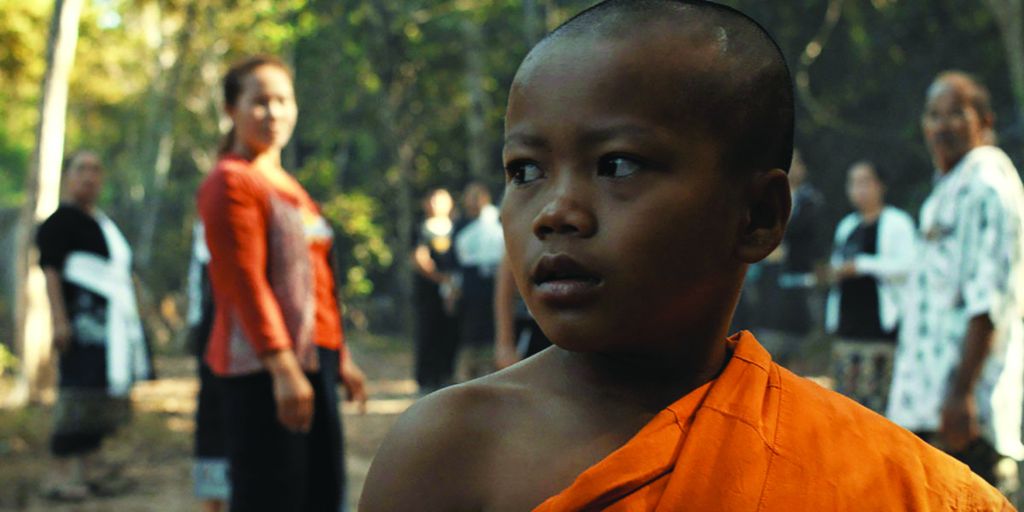
In his old age, the protagonist is a recluse, and clearly has been for a long time. Living in the same house he grew up in, poor like his parents, he has a decisively old-fashioned life; he collects and dries plants, which he brews into a strange black tea. But he also has a dark secret: forlorn and friendless, he murders women whom he feels are in a similar state, believing that he is releasing them from emotional or even physical pain. Traumatised by his mother’s illness and death, he wants to help these women find peace too. But there is a deep selfishness to his actions: there is a suggestion that he wants them to stay with him as a balm to his loneliness and, perhaps, as replacements for his mother. He buries them together in the garden where she used to work – a special place made terrible – saying that they will never be lonely again. As their spirits are not released from their physical bodies, they linger in the world; by keeping a finger bone from each, wrapped in linen like a relic, he keeps them from passing on.
There is no visible distinction between the living and the dead in the film. These ghosts are not scary, pale-faced, dark-haired spectres; nor do they appear decomposing or ethereal. Instead, they look as they did when they were alive. The Girl, for example, is decisively corporeal; she picks up and peels the fruit The Boy leaves as offerings for her at the roadside shrine, and holds his hand. He also never buries her body, ensuring she becomes his lifelong companion, a constant presence in his life when everyone else leaves. Yet she is also silent. These ghosts visualise how trauma haunts us, and how it bleeds into the lives of those around us, shaping the world we live in. The film asks us to consider our own deepest regrets: What would we go back and change, if we had the opportunity to? And how do these experiences shape our lives and who we are? It also considers the question of fate versus free will: The Girl’s intervention is only a gateway to the actions of The Boy / The Old Man, who sets in motion a chain of events that he cannot have anticipated but that viewers, of course, can easily predict, as time-travel lore rests on the idea that minor changes can have catastrophic repercussions.
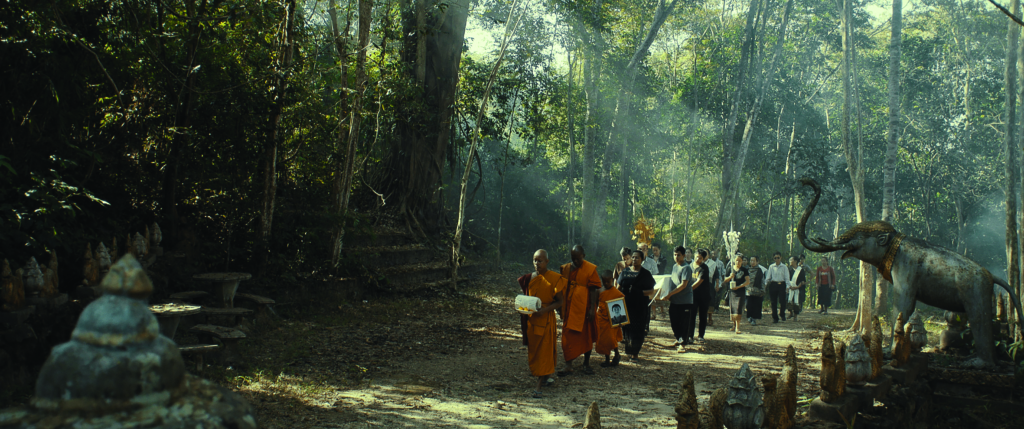
Like many sci-fi films dealing with time travel, The Long Walk relies on an interrogation of the way past, present and future are conceptualised. In Western cultures, time is perceived as an active force, moving forwards at a constant rate, inscribed across space.[3]See Joshua Keating, ‘Why Time Is a Social Construct’, Smithsonian, January 2013, <https://www.smithsonianmag.com/science-nature/why-time-is-a-social-construct-164139110/>, accessed 11 August 2020. But in Do’s film, time is not linear; seemingly parallel timelines are revealed to be both chronological and concurrent. When The Boy and The Old Man eventually meet, there are not two timelines – one past and one present – but instead multiple ones. Time travel in The Long Walk is not framed as a rupture, like in many sci-fi films, but as something more subtle and complex, with no clear delineation between past and present. There is no portal to enter, no vibrations or physical effects – The Boy / The Old Man simply walks with The Girl along the road into a different time. When she first draws a line in the sand on the road, encouraging The Boy to step over, there is a shift in colour and light, but the surroundings are the same. Changes are shown through the house, where items like the mermaid statue are found in various states – broken by The Old Man when he goes back, and then reassembled by him later.
Trying to prepare The Boy for the impending tragedy, The Old Man tells him that, if he needs him, he can ask The Girl to fetch him – but, in doing so, he actively interferes with the past, breaking the rule that past selves should never be met, and further complicating the timelines. Each decision he makes has unpredictable outcomes: as he loops through different scenarios, it is revealed that the changes he has instigated cannot be undone, and his own present – his ‘reality’ – gets progressively worse. He watches himself change, and not in the way he intended. Wanting to lessen his pain when his mother died – perhaps hoping that his life could have been better, and that his trauma could have been less debilitating – he instead witnesses himself becoming something monstrous. Do does not dwell on the horrors he inflicts on Lina in a later timeline, but they are nonetheless clear; the film constantly points to the unnerving fact that there might be something terrible inside all of us, waiting to be unlocked.
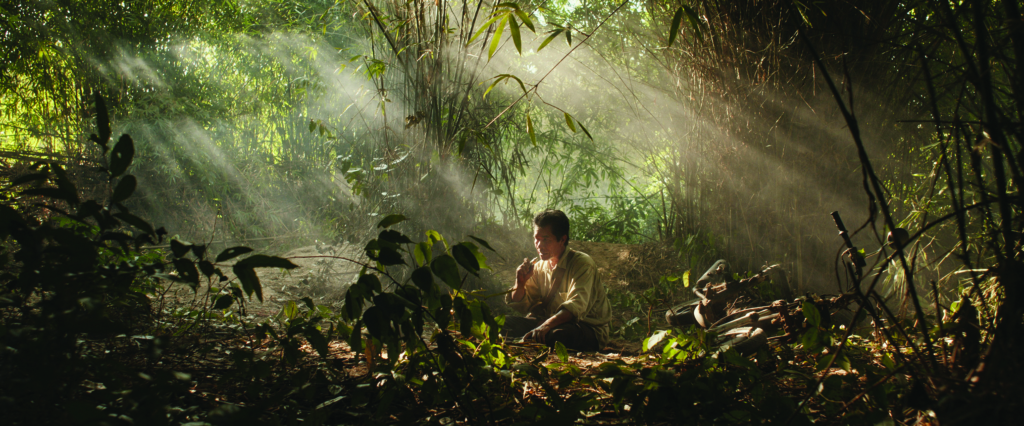
The Long Walk provoked an intensely personal response for me when I viewed it at the Brooklyn Horror Festival in October 2019 (shortly after its world premiere at Venice Days and its US premiere at Fantastic Fest). However, the film is likely to have a different – perhaps more immediate – tone now, in the context of the COVID-19 pandemic. Its exploration of death must be more palpable for many viewers, and the evocation of grief in the narrative microcosm expands to encompass the staggering death toll in the real world.
In crafting this demanding meditation on death and how it affects the living. Do tells me that she drew on the passing of her mother, as well as that of her beloved dog, Mango. Death is not sweet, she points out. The scars of watching a loved one die mark those of us who have done so in a way that seems impossible to express. In The Long Walk, Do reveals that not only does The Boy’s life change upon bereavement, but that everything inside him shifts, forcefully rearranged in a way that no longer fits together. It is this rupture that breaks him and that, as an adult, he looks back to as a turning point that he wishes he could fix.
The Long Walk ends with a surprising and incredibly bleak revelation. But there is also kindness embedded in the story. In the poignant moment when The Boy holds The Girl’s hand, witnessing the end of her life, they are bound together in a cosmic and yet deeply real way. In that moment, and however many countless times it might repeat, neither of them is alone.
Endnotes
| 1 | See ‘Meet Mattie Do – Laos’ First, and Only, Female Filmmaker’, Vietnam Times, 14 January 2020 <https://vietnamtimes.org.vn/meet-mattie-do-laos-first-and-only-female-filmmaker-17482.html>, accessed 11 August 2020. |
|---|---|
| 2 | A fortuitous recommendation by filmmakers Justin Benson and Aaron Moorhead, Macar was brought in after production had started and the role of cinematographer unexpectedly needed to be filled. |
| 3 | See Joshua Keating, ‘Why Time Is a Social Construct’, Smithsonian, January 2013, <https://www.smithsonianmag.com/science-nature/why-time-is-a-social-construct-164139110/>, accessed 11 August 2020. |

